#Wedding of Louis XIV
Explore tagged Tumblr posts
Text

@earlgrey24 you've inspired me
Hi my name is Chevalier François-Marie Arouet de Volatire Gentilhomme de Chambre du Roi. I like writing satire (that's why I got put in the Bastille) and I have a long grey wig à la Duc de Nevers and sparkly dark eyes that everyone talks about. A lot of people tell me my style looks like Louis 14 (AN: if u don't know that is get da hell out of here!). I'm not related to the Duc de Richelieu but I wish I was because he's a major fucking hottie. I live in Prussia but I'm French. I have pale white skin. I'm also a poet, and I write for the Comédie-Française which should really be called the Theâtre-Française where my plays are the most famous (I wrote my first one when I was nineteen). I'm basically nobility (in case you couldn't tell) and I wear a lot of lace and wig powder. All of my clothes are retro because it's cooler. For example today I was wearing a long pink and gold waistcoat, grey stockings, a blue silk coat with matching trousers and long lace cuffs reaching to my fingertips, a powdered wig, and my red Louis 14 shoes. I was walking outside Sanssouci. It was cloudy and I was freezing. Maupertuis stared at me and I put my middle finger up at him.
#of-#- the three wearers only the last now persists.#voltaire#notes: yes V did include chevalier in his titles on Mlle Corneille's wedding documents. why? i don't know#à la duc de nevers comes from Grimm's correspondance where he said Nevers had created a style of wig imitated only by Bachaumont and V#V said the comédie-française should be renamed the théâtre-française since most of the plays put on weren't comedies#émilie said he wore too much lace and used too much wig powder#he did wear clothes that were more late 17thC; mostly the wig style and longer waistcoats and cuffs#and you can see the louis xiv shoes (with the red heels) in huber's painting Voltaire's Morning#i'm disappointed i couldn't think of a good lead in to “(that's how i got my name)”#cause there's so many possibilities lol#oh and the eyes that everyone talks about is cause Pearson's “everyone mentioned them; men as well as women” (not incorrect)
32 notes
·
View notes
Note
The french monarchy (from the 1780s)
behead, behead, or behead

21 notes
·
View notes
Text
Beetlejuice's Backstory and the Black Plague 💚🕷️🥀💀 PART 3

Good evening! As promised, here’s Part 3 of my series on Beetlejuice’s past and movieverse. Today, we dive deeper into historical fashion, analyzing the outfits of Beetlejuice and Delores to uncover their personal stories.
If you missed the earlier parts, check out PART 1 and PART 2.
Warning: This post contains SPOILERS for ‘Beetlejuice Beetlejuice’ (2024)... and many, MANY speculations.
Quick recap: In Part 1, we discussed the Plague. In Part 2, we delved into Beetlejuice’s past, questioning the claim that he died over 600 years ago.
I wondered: is that really true? Why does his clothing reflect the Baroque style, then?
That's right! In Part 3, I confirm my previous point: there are several clues suggesting that Beetlejuice most likely lived during the Baroque era - a cultural movement that began in Rome at the end of the 16th century and faded around 1750. Here is the list of the clues I noticed:
The lace neckband around BJ's neck.
His three-piece wedding suit.
Delores off-the-shoulder neckline and puffed sleeves.
The bird masks used by Delores and the undertakers.
AliveBeetlejuice first outfit (when he's stealing from corpses): specifically, the pirate shirt and the type of shoes.
Keep in mind that most of these elements were revolutionary novelties of the 16th-17th century. Here is proof for every. single. one of them.
The Lace Cravat

A behind the scenes still of Michael Keaton in 'Beetlejuice Beetlejuice' vs. the portrait of Jacob de Witte, Lord of Haamstede (Netherlands). The artwork was made by Jan Mijtens in 1660.
The first cravat, the predecessor of modern neckties and bow ties, originated in France during Louis XIV’s reign as a political and fashion statement. (Although the early idea comes from the Ancient Roman focale, used around 200 CE). The King was inspired by a particularly eye-catching necktie wore by Croatian mercenaries as part of their uniform. The new article of clothing quickly became a fashion staple for high-ranking men across Europe.
In its use, it represented the evolution of the common handkerchief, already popular in the 1500s as a practical tool, a flirty decoration, and a status symbol. I believe the variant Beetlejuice is wearing in the picture is called ‘jabot,’ and is one of the older, simpler versions.
Lace, often used in cravats, highlighted the wearer’s wealth. Italian lace, especially from Venice, was highly sought after by the European elite since the 15th century, when ruffs and collars were in vogue.
This detail suggests two possibilities:
Beetlejuice might have been an impoverished aristocrat (or a rich merchant) clinging to his title until the end. This could also explain the ring on his index finger, symbolizing power or family ties. Or both.

Alternatively, he may have been someone who strongly wished to be part of the elite.
Jacket and Breeches

Aristocratic fashion, 1630 (Victoria & Albert collection) vs. What Beetlejuice wore in the wedding scene.
Another standout innovation of the Baroque period was the introduction of the three-piece men’s suit, known as the ‘Habit à la française.’
This ensemble included a tailcoat (a calf-length jacket), a coat (a long waistcoat), and knee-length breeches. Like the cravat, this fashion was adopted across Europe. As you can see, Beetlejuice is perfectly embodying this fashion, which evolved and remained popular until the 19th century. Interestingly, one shoe is missing.
Pirate Shirt
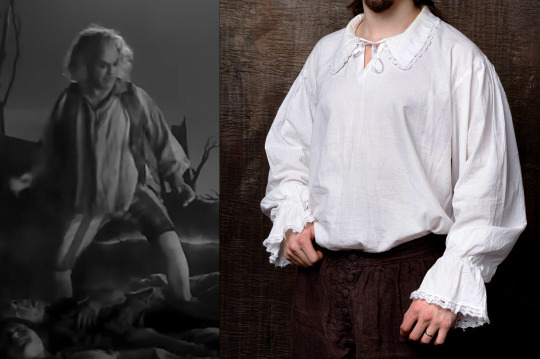
Originating in the 16th-17th century, the ‘poet shirt’ or ‘poet blouse’ remained popular through the Romantic era. These multi-purpose shirts served as both underwear and nightwear, featuring long tails that reached mid-thigh or knee. The body and sleeves were gathered at the collar and cuffs, creating a full, loose fit.
Delores' Outfit

For comparison, I’ve included an illustration of noblewomen’s fashion at the court of Louis XIII (died 1643). His successor, Louis XIV, made France a cultural and fashion beacon for the next two centuries.
In the movie, Delores wears two nearly identical outfits: long dresses with puffed sleeves ending just below the elbow, a corset, and an off-the-shoulder neckline. This style aligns with 17th-century trends when fashion became more comfortable and relaxed.
The black color suits her character’s personality and role in the film, possibly hinting at a connection to the late Renaissance and the Spanish Court.


In fact, during the reign of Charles V (1500-1558) and his son Philip II (1527-1598), Spanish aristocracy particularly favored the black color, as it represented austerity and power for both men and women. Additionally, a deep shade of black was particularly difficult to achieve with the dyeing methods of the time, making those fabrics quite expensive to make.
However, The Spanish style was quite the opposite to what France later proposed: it consisted in a severe and somber luxury, which increased in opulence as the time passed. As Spain happened to be the beacon of fashion before Louis XIV came along, it's only natural that black rapidly became quite popular all around Europe as well. The color was particularly appreciated by the members of the middle class in Protestant nations and, apparently, in Italy as well.
Finally, keep in mind that 'Delores' is a variant of the more common 'Dolores'. Both names have Spanish origins and means 'sorrows'.
So what do we think? Was Beetlejuice from a rich family? Was Delores a Spanish witch?
Who knows! But I’m willing to dream and speculate!
Until the big reveal from Tim Burton himself in the now teased but not confirmed yet sequel, have a fantastic week!✨
#beetlejuice movie#tim burton#michael keaton#film theory#film analysis#film stills#cinema#film#movie#beetlejuice#betelgeuse#beetlejuice sequel#beetlejuice beetlejuice#europe#italy#beetlebabes#italian#dark#plaguecore#baroque#17th century#history#renaissance#historical fashion#delores#beetlejuice 2024#black plague#beetlejuice 2#beetlejuice & lydia
77 notes
·
View notes
Text
so one thing Rashta is mostly known for outside of being the source of the Trashta meme is her Christmas tree wedding dress and everyone at her wedding making fun of it for being tacky

I'm not gonna lie while it is kind of pretty there is no way that thing did not require some tax payer money.
What gets me is that Remarried empress takes heavy inspiration from European fashion and aesthetics, and if you ever saw a portrait of Queen Elizabeth I, Marie Antionette, or Louis XIV.. you'd know that European nobles in those era wore very excessive clothes and jewelry. it would make more sense if it were commoners who saw the dress making fun of it, but with nobles making fun of her for wearing something flashy on her wedding it just feels like another mandatory hate on Rashta at least once per chapter.
this gets more confusing in the novel version and while to be fair we only get one shot of it, her wedding dress doesn't look as glammed up, if anything Sovieshu is about as decorated as his bride.
(It does look wonky with all random white lines but still not as flashy as a Christmas tree.)

and its not like this is just a "It's a fantasy story, the culture isn't going to be one to one with real history." thing either because Navier's wedding dress is described as having THOUSANDS of gemstones weaved into it.

It may not be as in your face flashy like Rashta's but if there are thousands of those gems in that dress not only would it be likely worth millions but it would also be heavy af. in general it would make sense for both dresses to be this flashy considering they are for royal weddings in a period akin to either the late 18th century or early 19th century but it frankly makes no sense that NOBLES of all people would be mocking Rashta for wearing something tacky when they aren't exactly known for modest dressing.
Tax payer money at it's finest right there.
#the remarried empress#rashta#empress navier#webtoon#maybe it's meant to be commentary on the hypocrisy of the rich but I doubt it
55 notes
·
View notes
Text
Napoleon and Water
Excerpt from the book Aaron Burr in Exile: A Pariah in Paris, 1810-1811, by Jane Merrill and John Endicott
Aaron Burr lived in Paris for 15 months, and this book goes into detail about those years living under Napoleon’s rule. This part focuses on Napoleon’s water related reforms.
———
Napoleon’s fountains gave drinking water to the population, that is, children drank water, not beer. The water was free, not purchased. And the apartment would have had a separate water closet equipped with squat toilets (adopted from the Turks) and a bucket to wash it after use. Some restaurants and cafes had W.C.s, even one for ladies and one for gents. These were hooked into the sewer system that branched under each important street.
Napoleon merits points for delivering fresh water to Paris. If serving Paris with water from the d'Ourcq River by canals was not be a consummate success, Paris gained 40 new fountains, and the emperor commanded that fountains run all day (instead of a few limited hours) and that the water be free of charge.
Perhaps the most laudable of Napoleon’s policies were utilitarian city works, especially bringing clean water and sanitation to Paris. The improvements to infrastructure included new quays to prevent floods, new gutters and pavement, new aqueducts and fountains, and relocating cemeteries and slaughterhouses to the outskirts of the city. This was also a way of keeping up employment. An Austrian aristocrat in town during Napoleon’s wedding to Marie-Louise wrote his mother, in Vienna: “Nothing can give an idea of the immense projects undertaken simultaneously in Paris. The incoherence of it is incredible; one cannot imagine that the life of a single man would be enough to finish them.”
It was a tall order. Previous rulers had been aware of the problems and one big engineering initiative, a failed marvel, had been the waterworks at Marly, located on the banks of the Seine about seven miles from Paris. Louis XIV had it constructed to pump water from the river to his chateaux of Versailles and Marly. This was the machine marvel of its age, with 250 pumps that forced river water up a 500-foot rise to an aqueduct, and it was a sight Burr mentions going to see. By 1817 the “Marly machine” had deteriorated because it was made of wood, and the waterworks were abandoned.
Charles-Augustin Sainte-Beuve, the prominent 19th century literary critic, wrote that there had been “ten years of anarchy, sedition and laxity, during which no useful work had been undertaken, not a street had been cleaned, not a residence repaired nothing improved or cleansed.” Postrevolutionary Paris was at a nadir in terms of both the inadequate, disease-ridden water supply and the filthy streets, which were basically open sewers, deep with black mud and refuse.
“Napoleon,” writes Alistair Horne, “was obsessed by the water of Paris, and everything to do with it.”
Parisians had mostly been getting their water directly from the Seine or lining up at the scant pay fountains. In 1806, nineteen new wells for fountains were dug that flowed day and night and were free. Napoleon had a canal built 60 miles from the River Ourcq, ordering 500 men to dig it, while still a consul in 1801. It brought water to the Bassin de la Villette, opening in 1808. Some doubted the wisdom of having such an abundance of water—an oriental luxury that might incur moral decay. Now the supply of water for firefighting was also much improved. The canal had light boats, as Napoleon tried to make back some of the huge expenditure by licensing navigation, and a circular aqueduct from which underground conduits went to the central city. In 1810, there were still many water porters wheeling barrels through the city.
Now Napoleon attacked the problem of the Seine as a catchall for pollution. Parisians were so used to it that men swam naked in the river and a contemporary guidebook advised merely that the water of the Seine had no ill effects on foreigners so long as they drank it mixed with wine or a drop of vinegar. Thus houses on bridges were demolished and an immense push began to clean and modernize the city sewers.
As this book is about Aaron Burr, here is section about Burr taking inspiration by a new water related invention during his time in Paris:
Remarkably for someone who was very aware of his health, he never complained of the water. He did, however, take an interest in an invention to make it easier to dig a well. When the inventor of a process to make vinegar from the sap of any tree was not in his shop, Burr and a friend, “Crede”, went to see another invention: “We went then to see Mons. Cagniard, and his new invention of raising water and performing any mechanical operation. His apparatus is a screw of Archimedes turned the reverse, air, water, and quick silver. Cagniard was abroad; but we saw a model, and worked it, and got the report of a committee of the Institute on the subject. If the thing performs what is said I will apply it to give water to Charleston.”
[Bold italics for quotations by me]
#Aaron Burr in Exile: A Pariah in Paris 1810-1811#Aaron Burr#Jane Merrill#John Endicott#napoleon#napoleonic era#napoleonic#napoleon bonaparte#first french empire#french empire#19th century#france#history#Paris#french history#water#water history#Napoleon’s reforms#social reforms#social history#reforms#napoleonic reforms
104 notes
·
View notes
Text

August 11th, 1925



On the morning of August 11th, a sunny Tuesday, Byron and Eleora married in a Reform Jewish ceremony in a London synagogue attended by the Walsh and Balass families along with close friends.


The afternoon and dinner hosted a large reception for the newlyweds at Walshstone Park, the wedding party traveling by train to meet the incoming guests. Eleora’s dress and veil were designed, handstitched, and embroidered by Giselle, and she wore diamond jewels that belonged to former duchesses of the past while Byron wore the tuxedo his grandfather Edwin wore when he married his grandmother Rose.


As the best man, Montgomery gave a speech describing how he met Eleora and Byron, the artist flapper and his fiancée’s academic prodigy brother, and how Byron forced him to introduce him to Eleora at a Halloween party, dressed as Louis XIV and Dionysus respectively. He quoted Marx toward the end, mostly just to rifle the majority upper-class guests, which Byron found extremely amusing. As the maid of honor, Samira spent her speech telling an embarrassing childhood story of her and Eleora which had the whole party roaring with laughter.
And for all her naysay of the wedding, Rebecca was suddenly happily chatting to her son’s new in-laws. Perhaps the thought of all the money the Balasses had was very appealing. Byron loved his mother, but he also thought she was a massive hypocrite.




And as the families stood for wedding portraits, all Byron could think about was how much he wanted his father, Alexander, and Edeline to be there.
beginning/previous/next
#the walshes#the walsh legacy#byron walsh#eleora balass#montgomery macgregor#samira patel#giselle walsh#francesca pace#rebecca walsh#ts4#ts4 1920s#1920s#the sims 4#sims 4#sims 4 historical#sims 4 decades#sims 4 decades challenge#sims 4 history challenge#history simblr#ts4 historical#ts4 decades challenge
36 notes
·
View notes
Text
Aulnoy's famous fairytales: The White Doe (2)
Now that we made a recap for the overall story, let's look at little details here and there, shall we?
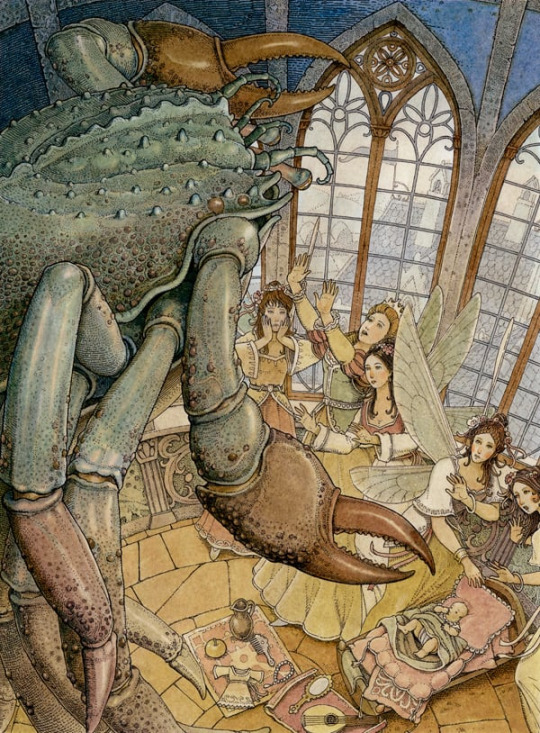
1 ) Despite this being one of the most famous and reprinted fairytales of d'Aulnoy, The White Doe/The Hind in the Woods is one of the more dated of these stories. Not just because of the problematic racist elements of "princess Black of Ethiopia", but also because this story was clearly written in honor and reference to the king of the tme, Louis 14. When the fairies create a palace for princess Desired to live into until her fifteenth birthday, and have inside of it the whole history of the world depicted by art pieces, d'Aulnoy breaks her narration to describe in a poem form the "greatest and most brilliant warrior king of History", who is not named but is very clearly Louis XIV. Earlier, when the queen visited the six fairies' palace, the fairies told her that to build it they hired "the architect of the Sun", who basically recreated "the Sun's palace" but in smaller proportions. This is an obvious reference to Versailles, the wonderful castle of the "Sun-King", Louis 14. And if this wasn't enough, there are also several explicit comparisons to an actual historical event contemporary to the story: a royal wedding. Several times throughout the narration, d'Aulnoy says that the beautiful clothes or gorgeous outfits of Desired are identical with or "right behind in term of beauty" to the outfits and jewels worn at a "certain princess" wedding. These are all comparisons made to a certain woman named Marie-Adélaïde de Savoie, who had just married the duke of Bourgogne, aka... Louis XIV's grandchild.
All of this makes the story feel very NOT "intemporal" since, if you don't have the historical context, all those moments seem a bit weird and mysterious. And yet, this fairytale stayed one of d'Aulnoy's most popular ones... My guess is that what seduced people in this story was the imagery it brought rather than the story or writing itself. People's mind and imagination were struck by the supernatural white doe a prince cannot capture, by the visual of this monstrous crayfish terrorizing a queen and fairies by cursing a baby, by the idea of a beautiful girl doomed to live in the dark until her fifteenth birthday...
In fact, the way madame d'Aulnoy writes this tale to celebrate the royal wedding might explain why the main protagonist here, Desired, has such a young age - barely fifteen. Because Marie-Adélaïde de Savoie, upon being wed to Louis XIV's grandchild, was only twelve... [Note however that madame d'Aulnoy did not condone or enjoyed at all child-weddings of this sort - she herself had suffered from an atrocious arranged wedding in her very early life, and this ended up in a complicated business of manipulations, false accusations, exiles and murders - but when you live in 17th century France, you better be a propagandist of the king, especially if you are a woman who tries to write fiction.]
2 ) The beginning of the fairytale is obviously to put in parallel with Perrault's Sleeping Beauty. Same "gift-giving christening by the fairies" scene, the same way the older and more powerful of the fairies arrives to curse the babe only to have her curse "eased" by the others, the list of gifts offered by the fairies being quite similar to the one of the Sleeping Beauty fairies - more explicitely, in the beginning of Sleeping Beauty it was explicitely said the queen visited/tried several miraculous/healing waters to try to have a baby - which is what the queen does in the beginning of this tale, except here it becomes the start of the plot.
3 ) While there is still the manichean divide typical of French literary fairytales of "good fairy and wicked fairy", here d'Aulnoy plays deliberately on the fairies ambiguity, to show that despite acting by a binary pattern, fairies stay a "gray" set of beings. For example, the Fairy of the Fountain or Crayfish Fairy, despite being one of the main antagonists, starts out in the story as a helper and a benevolent force - and in a twist, still does fulfill her role of "good fairy godmother"... but she does so to the princess Black, who is an unwilling/accidental antagonist to the hero of the tale. (A similar process, where the antagonistic fairy is just the fairy godmother of someone other than the hero, was already used by d'Aulnoy in several of her previous fairytales, including The Blue Bird). As for the six benevolent fairies, while they are all good and nice throughout the story, the narration still highlights that they have two sets of chariots, and that when angered they drive the dragons, snakes and panther-driven chariots, hinting that while they are here helpers they can become antagonists in other stories.
4 ) While there is all the racism I talked about before, it is quite interesting to see here that we have two "anti-portraits" of ugly women, meant to oppose Desired's supreme beauty, two anti-portraits that actually help us understand the beauty criteria at work in this end of the 17th century of France. For Princess Black, we see that her ugliness comes from a "dark skin", "big lips" and a "crushed, large nose" - which are, beyond traits typically "African connoted", the opposite of the French ideal of women with very pale skin, very small noses, very thin lips. But in contrast, we also have Long-Thorn who presents another set of flaws. Just like princess Black there is the nose - here too red and too hooked - but beyond that we also have added poor teeth hygiene (Long-Thorn has black and unaligned teeth), and more interestingly a body too tall and too skinny. In general, when it comes to ugliness d'Aulnoy typically invokes smallness/dwarfism or fatness/obesity, but from time to time she also insists that when a character is too tall or too skinny, they also are ugly. Because in this time era, while they wanted women tall, they still didn't want them as tall as men, and there was still a certain "interest in the curve" as without being very large or big, women needed to be plump and fleshy enough to have a body to appreciate (a bony and skinny body was not a beautiful one at the time). Of course, no need to remind you that this was a set of aristocratic ideals - because only the noble and the rich could afford to be chalk-white and "pleasantly plump".
5 ) People have noted that, funnily, the way prince Warrior falls asleep in the woods after eating apples he found there looks like a "male Snow-White". It is quite interesting because, while there probably wasn't a Snow-White reference (since it is not a typically French tale), madame d'Aulnoy had the very Christian background and culture of the apple as the "forbidden fruit" with the whole Garden of Eden story. Which leads to an interesting point...
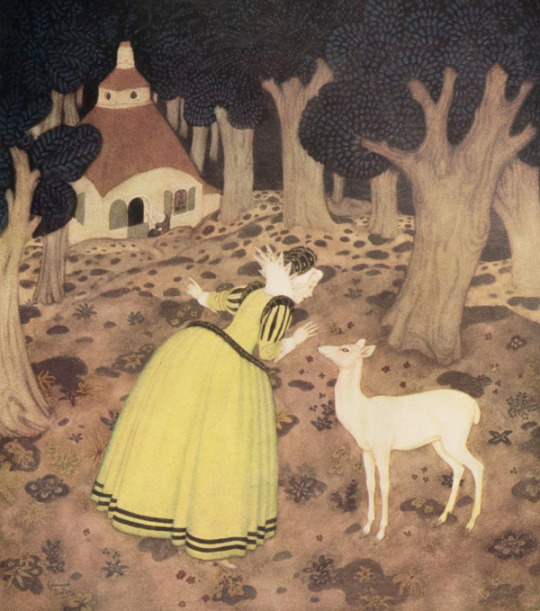
6 ) This fairytale is a sexy tale. It is not an overtly erotic fairytale, no, but there is an obvious VERY romantic if not sexy if not erotic connotation. This however only appears in the second half of the story, when Desired becomes the White Doe. Desired, turned into a prey, and Warrior, improvising himself a hunter, those two lovers, find themselves reunited deep into the woods (the uncivilized, savage, wild world) after purposefully leaving or fleeing their respective courts (the forest is noted to be filled with dangerous predatory animals, such as bears or lions). Warrior hunts down the White Doe, not knowing that she is the girl he is in love with and obsessed over - though he also grows a fondness, familiarity and love for this white doe. And all the while, the White Doe recognizes her hunter as the one she is in love with, and having to flee from him for her life is said to be just as painful as if she was actually hit by his arrows... Madame d'Aulnoy clearly plays here on metaphors and allegories to weave a whole "game of love" or "love as the hunt", "hunt as the love" section. Warrior hunting for the White Doe, the White Doe making sure she can be hunted while never letting herself be caught, it all evokes a bizarre game of seduction. Warrior clearly treats the Doe as more than a simple pet, claiming he "loves" it and wants it to follow him everywhere and to live with him. When the Doe tricks Warrior to escape him, and Warrior complains to his friend, Becafigue jokes about the situation being like an unfaithful woman cheating on her lover - but the prince answers his joke absolutely seriously. And of course, it is after the prince and the princess spend the night together, sharing their love, in human form, that the spell is broken... [Note: In my previous recap I might have written things backward, saying the spell is broken when "night comes and nothing happens". It is the reverse - they talk all ight long together, and as the morning comes she doesn't transform. Sorry about that.]
Beyond the general image, if things weren't clear eough d'Aulnoy keeps addng little details that make the story even more erotic - almost scandalous. The apple section I mentionned - prince Warrior eating apples in the woods before falling deeply asleep reminds of the first human consuming the "forbidden fruit", and it is when the White Doe dares sleep near him for the first time. When the prince catches the Doe or tries to "woo" it with gifts, it is said he keeps petting it, hugging it, caressing it, kissing it - as a pet, as an animal of course, but we reader know that there is a human woman underneath this doe skin, and so the erotic content cannot be escaped. ESPECIALLY when it is said that, after running from each other all day long, both return to their respective bedrooms "sweating and panting, exhausted by the time they spent together". And don't even get me started on how the prince ends up, to conquer and tie up the doe, hitting her with a single arrow in the leg, making her bleed... This is not a fairytale safe for kids.
7 ) Speaking of love, I did not mention it in my recap, but this fairytale is one of the rare ones of d'Aulnoy to have a moral in the end. To summarize it, d'Aulnoy explains that "With the story of this princess that wanted to leave too soon the dark place a wise fairy placed her in to hide her from the sun's light - and the metamorphosis and misfortunes that resulted from it - you will find an illustration of the dangers to which a young beauty exposes herself when she enters too young, too unprepared in the world. If you were gifted with all the traits and qualities that attract love to you, you better know how to hide them, because beauty can be deadly. If you think that by making others fall in love with you, you will shield yourself from love, well know that by giving too much, you always end up taking." So yes, long story short, this is meant to be more than just a fairy love story, but a warning for girls that too young, too beautiful, too unprepared, throw themselves in the world of love, adult and serious romance, and have to be confronted with the many dangers in it.
8 ) On a more "traditional love story" side, this fairytale accumulates ALL the story devices typical of romances of the type to avoid having the two lovers meet each other. In fact, this is the entire point of this story, the apex and climax and culmination: when princess Desired and prince Warrior can finally see each other in person, and talk to each other. At first you had the exchange of portraits and the sending of ambassadors, then you had the fake princess Long-Thorn hijacking the planned meeting, then the two lovers finally got under the same roof, but not only ignored each other's existence, even when meeting each other they didn't recognize themselves thanks t the doe curse... So when they finally see themselves as humans and touch each other as humans and talk a full dialogue, the story is complete and the curse is broken

9 ) Note however that despite the seemingly virtuous and chaste moral added at the end, madame d'Aulnoy does write the character of a more proactive and manipulative princess that "plays" her male lover. It is she that is happy with his caresses and petting and allows herself to be "touched" of the sort, and it is she that sneaks up by her lover's asleep body, and again the terms of the curse are clear - by day she is forced to become a beast, and to do as beasts do, aka to wander in the woods, aka to return to the world of savagery, primal desire and bestial behavior. On the other side, something that might escape a reader at first glance is that prince Warrior is not supposed to be a "prince Charmng" of the traditional genre. As I said, we are inside d'Aulnoy's second book of fairy tales, and so she reached a point where she plays with the conventions of the genre. In the whole hunt story, we have a brutal lover who tries to kill, seriously wounds though he heals it afterward) and ties up with knots his lover, treating her like a prey and a beast (well, because she IS, but you know) - and there is also the use of the peep-hole by Becafigue that solves the whole problem indeed, but by the undignified way of spying into women's bedrooms (Becafigue had already a not so good behavior when he acted as Warrior's ambassador, encouraging Desired's parents to ignore the "powerless" and "silly fairies" and disobey Tulip's warnings - and in the world of fairy tales one should NEVER underestimate the power of fairies)
But that's just for the second part of the story. In the first part, prince Warrior's behavior is also to be criticized. In fact, it is quite ironic that he is called "Warrior" and introduced as the winner of "three battles", because the first part of his character act has him acting as un-warrior, if not un-manly as possible. He becomes a love-stricken mess, he locks himself in his room talking to a portrait, he despairs of not being able to be with his love, he spends his day dreaming, and doing nothing, and wasting away, with no appetite for anything, making himself sick over lethargy and depression - and so fragile that he can't even wait three months for his loved one to come without fearing he would die. And even worse, when his hopes and dreams of love are crushed, he acts as a selfish coward by simply abandoning his parents, his throne, his court and duties, leaving secretly at night with just one letter behind to explain everything to his parents, and isolating himself from the world in desire to just cry on his own fate forever in some isolated place... We've got some emo teen in love vbes here.
10 ) This fairytale is very "medieval" like in tone. Beyond the "fairy christening" scene that is reused everywhere ever since Perrault and inherits from similar medieval scenes, a la Perceforest, the entire topic of the hunter going after a supernatural, white animal he cannot capture is an iconic topos of medieval literature. Typically this doubles or is tied to the hunter meeting some mysterious woman in the woods, preferably near a fountain, who might take him to a wonderful palace - but this happens rather to Desired's mother, who meets a fairy at a fountain, and is then taken to the six fairies' magical castle.
11 ) In terms of folkloric inspiration, if we use the Catalogue Delarue-Tenèze (a local form of the ATU Index but exclusively covering French fairytales), this story is clearly a literary take on the story type 403, "The substituted fiancee", "The fake fiancee". More specifically, it is a literary take on the 403-B (characterized by the metamorphosis of the real fiancee replaced by a fake one), though there is one element typical of the 403-A (the fact that the prince falls in love with a portrait). While inspired by it, madame d'Aulnoy clearly adds several purely literary elements that make this story very unique. For example the scene of the "fairy-gifts" and the "fairy-curse" at Desired's birth, or the presence of a first fiancee for the prince in the person of the princess Black, two elements united by the character of the Crayfish Fairy or Fairy of the Fountain - this all comes from d'Aulnoy's mind, and is traditonnaly not found in French folktales. And this was clearly placed here only to complicate the originally straightforward story into something much more focused on a "twist-and-turn romance".
#the white doe#the hind of the woods#french fairytales#literary fairytales#french fairy tales#madame d'aulnoy#d'aulnoy fairytales#fairytale analysis
122 notes
·
View notes
Note
Françoise Marie de Bourbon, daughter of Louis XIV and Madame de Montespan https://collections.domaine-de-sceaux.hauts-de-seine.fr/fr/notice/90-37-1-portrait-de-francoise-marie-de-bourbon-dite-mademoiselle-de-blois-legitimee-de-france-duchesse-de-chartres-puis-d-orleans-0e80c705-9560-4e34-aa5f-a32b86ad3c0d

4 notes
·
View notes
Text

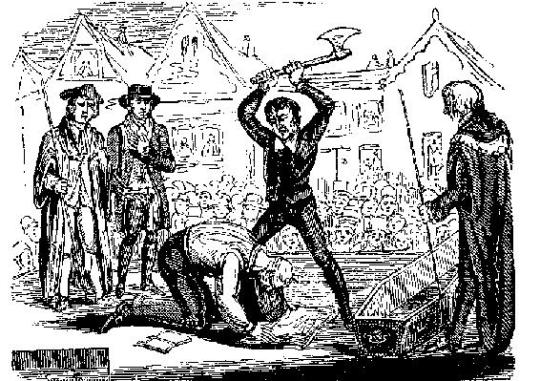
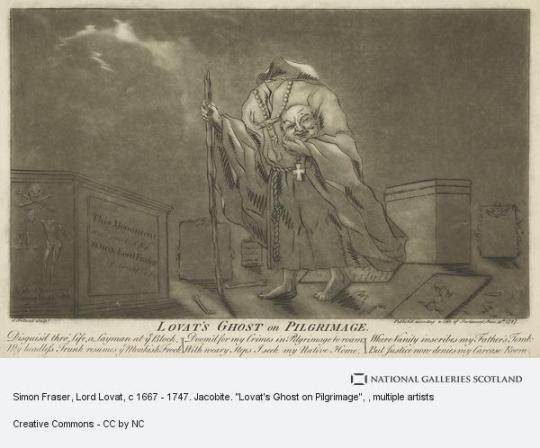
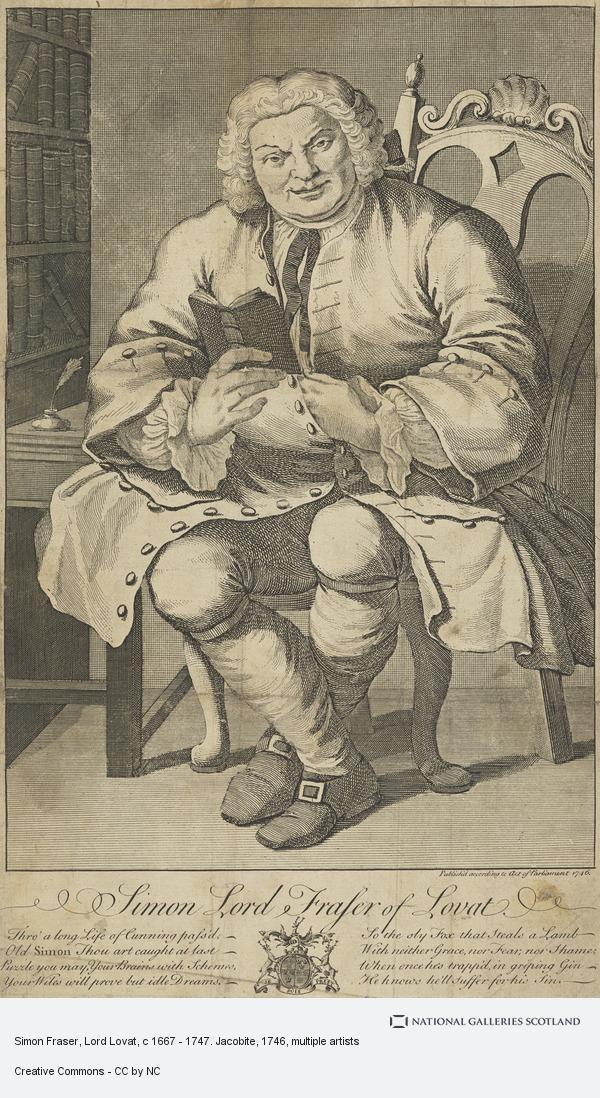
On 9th April 1747 Simon Fraser, Lord Lovat, the leading Scottish Jacobite rebel was beheaded on Tower Green.
A longer post than normal from me as in my opinion Simon Fraser was one of the most interesting characters in Jacobite history. A man of contrary, he was known to be very kind to the lesser clansmen taking a paternal interest in their affairs. A quote regarding him says that….“Generally he had a bag of farthings for when he walked abroad the contents of which he distributed among any beggars whom he met. He would stop a man on the road; inquire how many children he had; offer him sound advice; and promise to redress his grievances if he had any”
In his own estimate, he took care his clansmen were ‘always well-clothed and well-armed, after the Highland fashion, and not to suffer them to wear low-country clothes’ Lovat was also a brute of a man forcing a young woman into marriage and raping her in an attempt to legitimise the union. Lovat has become more well know lately thanks to Outlander, where in their world he is grandfather to the main protagonist Jamie Fraser and played brilliantly by the fine Scottish actor Clive Russell. Back in the real world he has been in the news in the recent past, I shall cover that at the end of this post.
Born in 1667 into the ancient clan who fought with distinction in the Wars of Independence – Sir Simon Fraser was one of the co-victors of the Battle of Roslin and his sons were close friends of Robert the Bruce, Alexander marrying Bruce’s sister Mary – Simon was the second son of Thomas Fraser of Beaufort who was closely related to Lord Hugh Fraser of Lovat, chief of clan Fraser.
Simon became his father’s heir when his elder brother was killed fighting alongside Bonnie Dundee against the forces of King William III at the Battle of Killiecrankie in 1689. He was still nowhere near being clan chief, however, and took himself off to Aberdeen University from which he graduated in 1695. Lord Hugh Fraser, the 9th Lord Lovat, was a weak man who unexpectedly signed over the clan leadership to Simon’s father in 1696.
Lord John Murray, Earl of Tullibardine and the most powerful man in Scotland, disputed the succession and fell out spectacularly with Simon in Edinburgh. The young Fraser hothead duly went north to Castle Dounie to try and persuade Hugh’s widow Amelia to give him the hand of her daughter, also Amelia, in a dynastic marriage that would seal his succession. Tullibardine was having none of it and moved his niece to the Murray stronghold, Blair Castle, where he planned to marry her off to Alexander Fraser, heir to the Lordship of Saltoun.
Simon retaliated by kidnapping Alexander and frightening him away, and to make matters worse in October, 1697, he went back to Castle Dounie and forced the widow Amelia into a sham wedding, raping her to consummate the “marriage”.
Tullibardine ensured Simon and his father were declared outlaws and when old Thomas died in 1699, Simon was unable to legally claim his title as 11th Lord Lovat which later passed to one Alexander Mackenzie who had legally married the younger Amelia.
Simon Fraser somehow managed to persuade King William that he was no threat, despite having his own personal army, and he was pardoned in 1700, only to be declared an outlaw again the following year over the forced marriage and rape.
Simon went off to the court of the Stuarts in France where he devised the plans that were eventually used in the 1715 and 1745 uprisings. Long before the former, however, Simon was double dealing, giving Queen Anne information about the plans of James, the Old Pretender. He was found out and King Louis XIV clapped him in jail for three years.
Even after he was released he was prevented from travelling to Scotland and thus missed the Act of Union which he opposed.
Still desperate to get his Lovat title and the chieftainship of his clan back, Simon sided with the forces of the new King, George I, during the ’15, and was given back his title as a reward, with Alexander Mackenzie imprisoned for being a Jacobite. The two men would fight in the courts for the next 15 years as to who was entitled to the income of the estate. Simon eventually won and spent his time building up the Fraser estates and wealth, even taking command of one of the Independent Companies of Highland soldiers established by the Hanoverian regime – the Fraser Highlanders.
As I said early Fraser was a man of contrary and to me was very like “Bobbing John” The Earl of Mar another Jacobite who a tendency to shift back and forth from faction to faction, no sooner had Fraser built up this “Hanoverian” army that he started openly campaigning for the restoration of the Stuarts. The Government responded by cancelling his military role.
When Bonnie Prince Charles landed in Scotland he was still playing games.
He allowed his sons to fight for the Stuarts, but stayed at home himself “loudly lamenting the wilful disobedience of children,” as Sarah Fraser has put it. Lovat did meet Charles, however, and expressed his anger at the lack of “siller” which he knew would be necessary for a successful campaign. They met again after Culloden, at which Clan Fraser fought bravely and suffered many casualties, and Lovat advised the prince to get away and re-form his forces. Charles fled through the heather, as we know, and made it to France while anyone associated with the Bonnie Prince was hunted down. The Duke of Cumberland’s troops were not taking any more games from Fraser and burned Castle Dounie.
Lovat managed to make it to Loch Morar but was captured there while hiding in a hollow tree. Although approaching his 80th birthday, The Fox was taken south to London.
He pled not guilty but his trial was a formality and he must have know his fate would be the same as previous nobles, the Earls of Kilmarnock, Balmerino and Derwentwater who were executed for treason the previous year.
At his trial, ever the Fox he insisted strongly upon his affection for the reigning family. Such were the characteristics of Simon Fraser, but of course he was found guilty the sentence, hanging, drawing and quartering was commuted later to a mere beheading by the King.
In a way, Lovat had the last laugh. Newspapers and pamphlets of the time recorded that as he was led out to the scaffold on Thursday, April 9, 1947, a wooden stand that had been erected near the Tower to seat crowds eager to see the execution collapsed sending hundreds plunging down. At least nine people died and dozens were injured, which amused Lovat – the phrase ‘laughing your head off’ is said to date from that event.
According to a woodcut print made on that fateful day, Lovat “with some composure laid his head on the block which the executioner took off with a single blow.”
As I mentioned at the top Lovat has been in the news quite recently. Simon had requested burial at the family mausoleum at Wardlaw near Inverness and the government initially agreed but changed its mind thinking his body could become a rallying point for further trouble. He was therefore buried in the floor of the chapel within the Tower of London, St. Peter ad Vincula. The chapel was refurbished in the 19th century and the floor was relaid. One of the coffins uncovered during the works had the nameplate of ‘Lord Lovat’. The names of those found are now recorded on a plaque on the wall of the chapel.
Fraser folklore, and written in several books says that his body was spirited away from London, the stories even go so far as to name the boat ‘The Pledger’ that sailed north to The Beauly Firth, where he was taken to the family mausoleum, there is even a plaque in the crypt that reads “In this coffin are laid the remains of Simon Lord Fraser of Lovat who, after twenty years in His own Land and abroad with the greatest distinction and renown, at the risk of his own life, restored and preserved his race, clan and household from the tyranny of the Athol and the treacherous plotting of the Mackenzies of Tarbat. To preserve an ancient house is not the greatest credit. Nor is there any honour for the enemy who despoiled it. Although that enemy was strong in his plotting and unrelenting warfare, yet Simon who was also skillful and cunning defeated him in war.“
In 2018 the headless skeleton inside the coffin was exhumed to be examined by experts from the University of Dundee in January this year they announced that the bones in the coffin did not belong to Simon Fraser, but to a young woman. So it looks like his body did end up rotting in The Tower’s Chapel, although the Frasers will still tell you otherwise.
Scottish actor Clive Russell played The Old Fox in the television adaptation off Outlander.
15 notes
·
View notes
Note
For the 3 names thing
Louis XIV
George Washington
Frederick the Great
sorry if these aren't Stuarts 😅
Ooh this is a good one! Thank you, Anon.
Let's see...
I would probably bed Louis XIV because well, he's handsome but goes from one lady to another so being his wife would be no good.
And then wed Frederick the Great. I know he's into men but I think we'd get on well. I think we like the same thing.
I guess I'm now left with beheading George Washington, oh no I don't actually want to behead him! I can't do killing people, maybe I could fake his death and help him escape hopefully?
10 notes
·
View notes
Text
The Timeless Allure of Cufflinks: Style, Symbolism, and Sartorial Impact
Introduction: The Subtle Power of Details
In the world of men’s fashion, the smallest details often make the biggest statement. Among these understated elements, cufflinks hold a unique place. Not merely functional fasteners for shirt cuffs, they are emblems of sophistication, markers of personality, and sometimes even tokens of personal milestones. While belts, ties, or shoes are the usual suspects in a man's wardrobe, cufflinks often remain a niche—precious, subtle, yet transformative.
This article dives deep into the world of cufflinks, tracing their history, their evolution, their cultural impact, and their place in contemporary fashion. Whether you are a sartorial enthusiast, a curious beginner, or someone exploring gifting ideas, understanding cufflinks offers insight into the quiet elegance of classic style.
1. A Glimpse Into History: Where Did Cufflinks Come From?
Cufflinks have existed in some form since the early 16th century, but their widespread popularity began during the reign of Louis XIV in France. Royalty and nobility began replacing ribbons and ties used to fasten shirt sleeves with jeweled buttons connected by chains — the earliest version of what we now know as cufflinks.
As the Industrial Revolution brought tailored shirts into the mainstream, cufflinks followed. By the 19th century, they were no longer exclusive to aristocrats. Materials evolved too — from pure gold and enamel to mass-produced metals and glass. In short, cufflinks transitioned from rare regalia to everyday style symbols.
2. The Anatomy of a Cufflink
While small in size, cufflinks are structurally complex and varied in design. Here's a quick breakdown of the most common types:
Bullet Back & Toggle – The most common and user-friendly type. Features a small cylinder that flips 90 degrees to secure the link.
Whale Back – Similar to bullet back, but with a flat "whale tail" toggle.
Chain Link – Offers flexibility with two decorative faces connected by a chain.
Stud/Button Style – Requires precise insertion, offering a sleek, minimal profile.
Silk Knot – Typically colorful and casual, made from elastic or silk cord, used for a relaxed look.
Each style serves different functions, aesthetics, and occasions.
3. The Language of Cufflinks: Symbolism and Statement
Cufflinks are more than ornaments. They're quiet communicators. In business, a pair of classic silver cufflinks signals confidence and refinement. At a wedding, engraved cufflinks can memorialize a significant date. At an art gala, abstract or enamel cufflinks can hint at one’s creative side.
Symbolically, they serve various functions:
Status Symbol: Historically, owning precious metal cufflinks signaled wealth.
Sentimental Value: Family heirlooms passed down generations often come in the form of cufflinks.
Professional Edge: Worn in boardrooms to reflect seriousness, attention to detail, and personal pride.
Cultural Ties: Certain designs incorporate regional motifs, traditional techniques, or specific stones.
Even without saying a word, a man wearing thoughtful cufflinks offers a story — one stitched into his sleeves.
4. Cufflinks and Cultural Craftsmanship
In many parts of the world, cufflinks are more than accessories — they’re canvases of culture. Indian craftsmanship, for instance, offers exquisite enamel work, meenakari designs, and miniature motifs drawn from heritage. In regions known for metalwork, hand-engraved or filigree patterns bring artistry into fashion.
Traditional influences such as Islamic geometry, Mughal floral designs, or tribal motifs breathe life into these small wearable sculptures. When designed with care, cufflinks become less about matching an outfit and more about showcasing heritage, identity, and artisan skill.
5. When and How to Wear Cufflinks
You don’t need to wait for a tuxedo moment to wear cufflinks. Here’s a quick guide to their use in different settings:
Formal Occasions:
Black-tie events, weddings, award functions
Choose classic styles: silver, onyx, or pearl inlays
Business Settings:
Board meetings, client lunches, interviews
Understated metals or monogrammed styles work well
Festive or Cultural Events:
Festivals, family gatherings, traditional ceremonies
Explore engraved pieces, regional motifs, or stones like turquoise and coral
Casual Flair:
With a crisp linen shirt at a garden party or casual brunch
Try colorful enamel, playful shapes, or novelty designs
Cufflinks are versatile — they can whisper elegance or shout individuality depending on the choice.
6. The Rise of Personalization in Cufflinks
As gifting becomes more intentional and expressive, personalized cufflinks have gained popularity. Engraved initials, wedding dates, astrological signs, or even tiny illustrations now find a place on these accessories.
What makes them particularly attractive as gifts is their dual nature — practical and sentimental. They're useful, timeless, and loaded with meaning. Whether it’s for a groom, a father, or a close friend, cufflinks offer a beautiful way to say “you matter.”
7. Sustainability and the Slow Fashion Element
In the fast-paced world of fashion, there’s a growing movement toward slow, intentional design. Cufflinks, especially handcrafted ones, align with this philosophy. They are durable, rarely go out of style, and can be passed down. When crafted ethically, using local materials and skilled artisanship, they become part of a sustainable wardrobe narrative.
Investing in high-quality cufflinks made by artisans ensures not only beauty but also supports traditional crafts and small-scale production. It’s a win for both the wearer and the maker.
8. Caring for Your Cufflinks
Because cufflinks are often made with metals, stones, or enamels, proper care ensures longevity:
Store them in a separate pouch or box to prevent scratches
Clean them gently with a microfiber cloth
Avoid moisture exposure, especially for enamel or silk designs
Regularly inspect toggle or closure mechanisms for wear
Taking care of these small accessories goes a long way in preserving both their function and sentiment.
Conclusion: The Legacy on Your Sleeve
Cufflinks may seem like a minor accessory, but they carry the weight of history, culture, and craftsmanship. In today’s world, where fast fashion often overshadows meaning, cufflinks remind us that elegance lies in detail, and that a man’s style can speak volumes — even if it’s just from his cuff.
Whether you're building a refined wardrobe, seeking a meaningful gift, or honoring tradition, cufflinks offer more than style. They offer identity, history, and timeless charm — all fastened neatly at your wrist.
0 notes
Text
How Chocolate Became the Ultimate Symbol of Love and Romance
Chocolate, often referred to as the “food of the gods,” has long been associated with love, indulgence, and passion. Its luxurious texture, irresistible taste, and the sense of pleasure it evokes make it the perfect gift to express romantic feelings. From ancient civilizations to modern-day Valentine’s Day, the connection between chocolate and love has evolved but remains deeply intertwined.

1. The Ancient Origins of Chocolate and Love
The association between chocolate and love dates back to ancient times. The Mayans and Aztecs, two prominent Mesoamerican civilizations, were among the first to cultivate the cacao tree, which produces cocoa beans, the main ingredient in chocolate. In these cultures, cacao was highly revered and considered sacred.
1.1 Mayan and Aztec Rituals
For the Mayans, chocolate was more than just a delicious treat. It was a symbol of fertility and prosperity, often consumed during sacred ceremonies, including weddings and celebrations of love. Cacao beans were ground into a paste, mixed with water, chili, and spices to create a frothy, bitter drink called “xocolatl,” which was believed to have aphrodisiac properties.
Similarly, the Aztecs viewed chocolate as a gift from their gods. The emperor Montezuma is said to have consumed large amounts of chocolate to boost his virility, believing it had the power to enhance romantic relationships. The Aztecs also used cacao beans as currency, emphasizing its high value and importance in society.
2. Chocolate’s Introduction to Europe: A Royal Romance
Chocolate made its way to Europe in the 16th century, brought back by Spanish explorers who had encountered it in the New World. At first, chocolate was reserved for the elite and nobility, as it was an expensive and exotic luxury.
2.1 The Royal Court’s Obsession with Chocolate
In Europe, chocolate became popular in royal courts, particularly in Spain and France. It was served as a rich, sweetened beverage, often flavored with sugar and vanilla. Louis XIV of France was known to be a chocolate lover, and it became a symbol of opulence and indulgence in the French court.
The romantic allure of chocolate in Europe grew, partly because it was believed to have aphrodisiac qualities, much like in Mesoamerican cultures. Chocolate began to be exchanged as a token of affection among the wealthy and powerful, solidifying its connection to love and romance.
3. The Victorian Era: Chocolate as a Romantic Gesture
It was during the Victorian era that chocolate truly became synonymous with romance, largely thanks to the rise of the chocolate industry and the growing commercialization of Valentine’s Day.
3.1 Richard Cadbury and the Chocolate Box
In the 19th century, Richard Cadbury, a member of the famous Cadbury family, played a pivotal role in popularizing chocolate as a gift for lovers. He introduced beautifully designed, heart-shaped chocolate boxes adorned with flowers and romantic imagery, specifically marketed for Valentine’s Day. This innovation made it easier for people to express their romantic sentiments through chocolate.
Cadbury’s chocolate boxes became an instant success, and the tradition of giving “love chocolate” on Valentine’s Day began to flourish. The heart-shaped chocolate box is now a staple of modern romantic gestures, and Cadbury’s marketing genius helped cement chocolate’s status as a symbol of love.
4. The Science Behind Why We Love Chocolate
While the historical and cultural associations between chocolate and romance are fascinating, there’s also a scientific explanation for why chocolate is so often linked with feelings of love and passion.
4.1 Chocolate and the Brain
When we consume chocolate, our brain releases chemicals that promote feelings of happiness and pleasure. One of these chemicals is phenylethylamine (PEA), often referred to as the “love drug,” which is also released during moments of romantic excitement. PEA stimulates the brain’s pleasure centers, mimicking the feeling of being in love.
Chocolate also contains serotonin, a neurotransmitter that contributes to feelings of well-being and happiness. The combination of PEA and serotonin makes chocolate a mood-enhancer, which may explain why we associate it with romantic feelings.
4.2 The Aphrodisiac Myth
Though chocolate has long been considered an aphrodisiac, there is limited scientific evidence to support this claim. However, its luxurious taste, pleasurable texture, and the way it melts in your mouth can evoke sensual experiences, making it a popular choice for romantic occasions.
5. Modern Chocolate and Romance: A Global Tradition
Today, chocolate is a universal symbol of love and romance, and its role in expressing affection has only grown stronger with time.
5.1 Valentine’s Day: The Chocolate-Lover’s Holiday
Valentine’s Day is perhaps the most significant day of the year when it comes to giving chocolate as a token of love. Millions of people around the world purchase and exchange chocolate with their significant others, making it an essential part of the celebration.
Chocolate companies have capitalized on this tradition by creating special products for Valentine’s Day, including heart-shaped boxes, chocolate roses, and personalized chocolate gifts. Whether it’s a box of luxury truffles or a simple chocolate bar, “love chocolate” is an integral part of this romantic holiday.
5.2 Chocolate in Romantic Gestures Around the World
The association between chocolate and romance extends beyond Valentine’s Day. In Japan, for example, chocolate plays a significant role in two holidays: Valentine’s Day and White Day. On Valentine’s Day, women traditionally give chocolate to men, while on White Day, men return the favor with gifts of chocolate.
In many cultures, chocolate is given as a symbol of love during weddings, anniversaries, and other romantic milestones. Its versatility and wide appeal make it a timeless gift that transcends cultural boundaries.
6. Conclusion: Why We Will Always Love Chocolate
From its ancient beginnings as a sacred food to its modern-day status as the ultimate romantic gift, chocolate has always had a special connection to love and passion. Its rich history, combined with its chemical effects on the brain, makes chocolate the perfect symbol of affection. Whether it’s the delicious taste, the luxurious feel, or the deep-rooted cultural significance, chocolate continues to capture the hearts of lovers worldwide.
0 notes
Text
Events 9.5 (before 1950)
917 – Liu Yan declares himself emperor, establishing the Southern Han state in southern China, at his capital of Panyu. 1367 – Swa Saw Ke becomes king of Ava. 1590 – Alexander Farnese's army forces Henry IV of France to lift the siege of Paris. 1622 – A hurricane overruns a Spanish fleet bound from Havana to Cadiz and sinks the galleon Atocha. Only five men are rescued, but 260 passengers and 200 million pesos are buried with the Atocha under 50 feet of water. 1661 – Fall of Nicolas Fouquet: Louis XIV's Superintendent of Finances is arrested in Nantes by D'Artagnan, captain of the king's musketeers. 1666 – Great Fire of London ends: Ten thousand buildings, including Old St Paul's Cathedral, are destroyed, but only six people are known to have died. 1697 – War of the Grand Alliance : A French warship commanded by Captain Pierre Le Moyne d'Iberville defeated an English squadron at the Battle of Hudson's Bay. 1698 – In an effort to Westernize his nobility, Tsar Peter I of Russia imposes a tax on beards for all men except the clergy and peasantry. 1725 – Wedding of Louis XV and Maria Leszczyńska. 1774 – First Continental Congress assembles in Philadelphia. 1781 – Battle of the Chesapeake in the American Revolutionary War: The British Navy is repelled by the French Navy, contributing to the British surrender at Yorktown. 1791 – Olympe de Gouges writes the Declaration of the Rights of Woman and of the Female Citizen. 1793 – French Revolution: The French National Convention initiates the Reign of Terror. 1798 – Conscription is made mandatory in France by the Jourdan law. 1812 – War of 1812: The Siege of Fort Wayne begins when Chief Winamac's forces attack two soldiers returning from the fort's outhouses. 1816 – Louis XVIII has to dissolve the Chambre introuvable ("Unobtainable Chamber"). 1836 – Sam Houston is elected as the first president of the Republic of Texas. 1839 – The United Kingdom declares war on the Qing dynasty of China. 1862 – American Civil War: The Army of Northern Virginia crosses the Potomac River at White's Ford in the Maryland Campaign. 1877 – American Indian Wars: Oglala Sioux chief Crazy Horse is bayoneted by a United States soldier after resisting confinement in a guardhouse at Fort Robinson in Nebraska. 1882 – The first United States Labor Day parade is held in New York City. 1887 – A fire at the Theatre Royal, Exeter kills 186, making it the UK's deadliest ever building fire. 1905 – Russo-Japanese War: In New Hampshire, United States, the Treaty of Portsmouth, mediated by U.S. President Theodore Roosevelt, ends the war. 1914 – World War I: First Battle of the Marne begins. Northeast of Paris, the French attack and defeat German forces who are advancing on the capital. 1915 – The pacifist Zimmerwald Conference begins. 1932 – The French Upper Volta is broken apart between Ivory Coast, French Sudan, and Niger. 1937 – Spanish Civil War: Llanes falls to the Nationalists following a one-day siege. 1938 – Chile: A group of youths affiliated with the fascist National Socialist Movement of Chile are executed after surrendering during a failed coup. 1941 – Whole territory of Estonia is occupied by Nazi Germany. 1942 – World War II: Japanese high command orders withdrawal at Milne Bay, the first major Japanese defeat in land warfare during the Pacific War. 1943 – World War II: The 503rd Parachute Infantry Regiment lands and occupies Lae Nadzab Airport, near Lae in the Salamaua–Lae campaign. 1944 – Belgium, Netherlands and Luxembourg constitute Benelux. 1945 – Cold War: Igor Gouzenko, a Soviet Union embassy clerk, defects to Canada, exposing Soviet espionage in North America, signalling the beginning of the Cold War. 1945 – Iva Toguri D'Aquino, a Japanese American suspected of being wartime radio propagandist Tokyo Rose, is arrested in Yokohama. 1948 – In France, Robert Schuman becomes President of the Council while being Foreign minister; as such, he is the negotiator of the major treaties of the end of World War II.
0 notes
Note
🍀🎹✂️ for Genevieve please?
Heehee thank you <33
🍀 - What originally inspired the OC? She used to be a TDV OC because I wanted to have a girlfriend for Magda <33 also the particular time she's from is because of my ongoing fixation on Versailles and the court of Louis XIV
🎹 - Do they have any hobbies? She plays the piano and has dabbled into the flute, she also likes embroidery and generelly spends a lot of time doing arts and crafts. After leaving the court, she also started getting really into learning new languages and hunting.
✂️ - What is one of your OC’s worst memories? Under normal circumstances, I'd say her wedding day, but considering she was betrayed by her beloved, hunted down and bled out before being turned into a vampire, I'm gonna say that
1 note
·
View note
Text
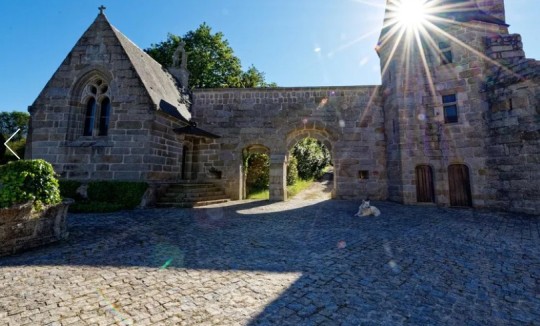



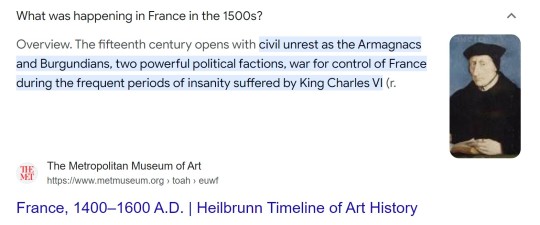
INSANITY - HAS - 2 - DO - WITH - THE - WEATHER
ENGLAND - RARELY - HAS - A - BRIGHT - WARM &
LONG - SUNNY DAY - EVER - WHEN - FORMER -
SERENE - PRINCESS - WED - 'SPARE' - AFTER -
MARRIAGE - HIS - ROYAL HIGHNESS - PRINCE -
HARRY - GREENEST - LAWNS - SAW - TV YES -
LIVE COVERAGE - 'FORSAKING ALL OTHERS' -
ABOUT - THE - MISTRESS - OF - PRINCE - YES -
THE - 1ST - 'ALL - OTHERS - NOT - FORSAKING' -
YEAR - 1500 - HAD NO - KING - YET IN FRANCE -
34 YRS - LATER
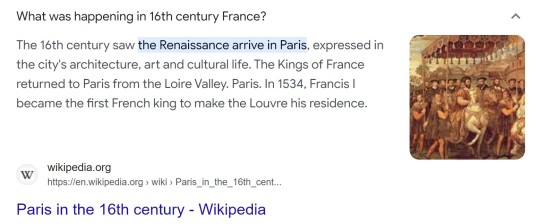
KING - FRANCIS 1 - MADE - LOUVRE - PARIS -
FRANCE - HIS - RESIDENCE - RETURNED FR -
LOIRE VALLEY - OVER - 2 HRS AWAY - 2 BE -
KING - OF - FRANCE - 16TH - CENTURY - FR
A - COUNTRY - 2 B - PROUD - OF - 2 B PART
OF - NO ONE - FR - PHILIPPINES - EVER FL
FOLLOWED - ME - HERE - BECAUSE THEY
PRODUCED - THEIR - FAMILY - THEIR - YES
CLASSMATES - NEIGHBORS - THEIR TRUE
DIALECTS - BUT - HISTORIANS - KNOW -
PHILIPPINES - NOT - CONTINUOUS YES -
EXISTENCE - THEY - ALL - DIED - AFTER -
67,000 YRS - LUZON - AND - VISAYAS SO -
5,000 YRS - CONTINUOUS - EXISTENCE
CHINA - FLED - 2 - LUZON - SKELATONS
EVERYWHERE - SINCE - ME - KNIFED -
SHOT - RAPED - NO - ONE - FR - THAT -
COUNTRY - FOLLOWED - ME - WELL -
TIME - 2 - GO - BACK - 2 - MY ROOTS -
EUROPE - CHINA - KOREA - ALSO KR -
FLED - 2 - PILIPINAS - AND - BEGAN -
AGAIN - PHILIPPINE - ISLANDS - AS -
MEDICAL - RACE
JESUS - SAID - U - JUST SHAKE - THE -
DUST - OF - YOUR - SANDALS - POINT -
FEET - 2 - THE - CITY - THAT - DON'T -
WELCOME - U - BETTER OFF - THAT -
THE - CITY - U - WERE - IN - NEVER -
EVER - EXISTED - THOSE - CITIES -
WILL DISAPPEAR - FR - EXISTENCE -
BRITTANY - WHERE - I'M - GOING 2 -
AS - DIRECT - DESCENDANT - OF -
SIR PATRICK HENRY
QUEEN - MARY - OF - SCOTTS
LAST KING LOUIS OF FRANCE
RELATIVES - OF -
KING ALEXANDER - ANCIENT - GREECE
JULIUS CAESAR - ANCIENT - ROME
TIME - 2 - MAKE - EUROPE - HOME
I'M - A - PROVINCIAL - PERSON - A
FARM - GIRL - LOVE - OUR - SEAS
OUR - FISHERMEN - AS - THEY FR
BRIG - US - SEAFOOD - CRABS
LOBSTERS - HUGE - FISHES - 2
EVEN - IN - PILIPINAS - RARELY
DID - ANYONE - TALK - 2 - ME 2
KILL - ME - WHAT - THEY - DID A
LOT - KIDNAPPED - ME - DID PH
MANY - THINGS - 2 - ME - BUT AS
PEOPLE - ONLY - CHILDREN - YES
TALKED - 2 - ME - THE - REST DID
THEIR - BEST - 2 - COLLECT - FRM
FAMILY - INSURANCE - $1 MILLION
DEATH - OF - EACH - CHILDREN AS
STARTED - BY - MOTHERS - GRADS
UNIVERSITY - OF - PHILIPPINES SO
BACK - 2 - EUROPE - AND - OTHER
ASIA - ONLY - BUYING - MAKATI - &
MINDORO - ISLANDS - 4 - ONLY THE
KIDS - OF PILIPINAS - TALKED 2 ME
BIG - SUSU - PIA - AND - CATRIONA
THEY - WORSHIP - AND - ADORE - 4
NO ONE - CONGRATULATED ME -
5 GOLD - MEDALS - IN - EUROPE -
BUFFET - IN - MIAMI - EVEN - AS -
HOMELESS THEY DON'T KNOW -
ME - CLEAN - THEIR - FLOORS -
1,000 - A MONTH - UNFURNISHED -
KNOWING - SSI LESS - THAN THAT -
BRITTANY - FRANCE - WORLD's OLDEST -
STANDING - ARCHITECTURE - PILIPINAS -
BIG SUSU - BEAUTY PAGEANT WINNERS -
MS UNIVERSE - 2018 - CATRIONA GRAY -
$250,000 - NO - CROWN - ONLY - RENT -
UNITED STATES - 'U - GET - WHAT - YOU -
PAID - FOR' - NATURALIZATION - NUDE -
IN - FRONT - 2 - IDENTIFY - GENDER - & -
DEADLY - DISEASE - PEEPERS - AS USA -
MORE - THAN - 1 MILLION - DEAD - FRM -
CORONAVIRUS - COLDS - COUGH - AND -
FEVER - AGE 245 - MEDICAL - EXPERTS

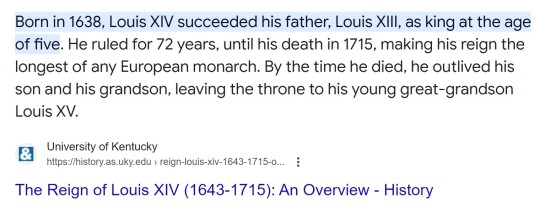
KING LOUIS XIV - WAS - ONLY - AGE 5 - SUCCEEDED -
HIS - FATHER - LOUIS XIII - RULED - 72 YRS - MAKING -
HIS - REIGN - THE - LONGEST - OF - ANY - EUROPEAN -
MONARCH - USA - MISS UNIVERSE - REIGNS - 1 YEAR -
HER - BEAUTY - AND - LARGE - SUSU - BY - JUDGES -
ALWAYS - 2 BLKS - 1 GAY - AND - OTHERS - THIS KING -
OUTLIVED - HIS - SON - AND - GRANDSON - GIVING -
HIS THRONE - 2 - HIS - YOUNG - GREAT - GRANDSON -
LOUIS XV - ALSO - AT - THE - AGE OF 5 - HOW - COOL
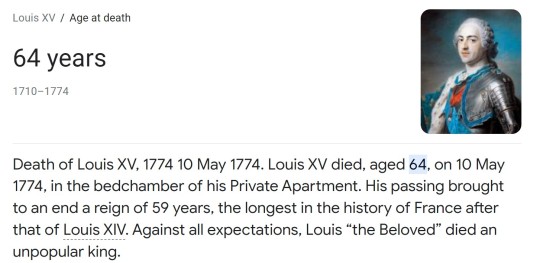

GOOGLE - SEARCH - KEEPS - CLOSING -
ALL - THE - ARROWS - I - OPENED - TO -
GIVE - ME - INFORMATION - ON FRANCE -
GOOGLE - ANTI - FOREIGNERS - AS - USA
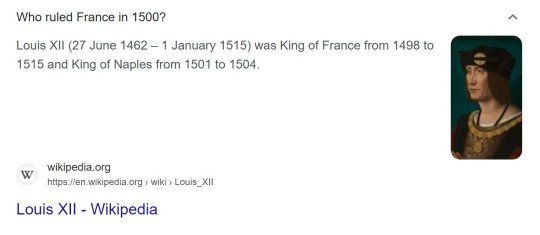
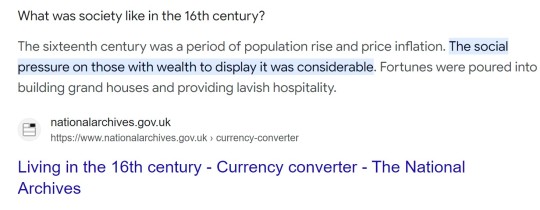

ROBUST - CUISINE - OUTDOORS - MEATS - CHICKEN -
AND - SEAFOOD - FULL - FLAVORED - GOD's - TRUE -
GOODNESS - INTO - THE - KITCHEN - MACHEREL -
SARDINES - PORK - RILLETTES - ENGLISH - YES -
PANCAKES - APPLE - CIDER - FRENCH - CREPES -
ADD - A - DASH - OF - SWEETNESS - SOUNDS FR -
DIVINE - PREPARING - 2 - GO - 2 - MIAMI BEACH -
FREE - SHOWER - JUST - 35 MIN - AWAY - WILL B -
BACK - JESUS - IS - LORD - FOUND - HOME -
AGAIN - LEAVING - TYRANTS - OPPRESIVE -
BORN - IN - PHILIPPINES - 2 - WHAT - TRUE -
PURPOSE - 2 B - BORN - 2 - SING - & DANCE -
BACK - HOME - ENGLAND - IN - FRANCE -
BACK - 2 - BRITTANY - FRANCE - 'JOLLY -
ENGLAND' - IN - FRANCE - BACK HOME -
4 - SMALL - EUROPEAN - COUNTRIES -
ALWAYS - WELCOMED - ME - AND MY -
PHILIPPINE - UNIFORMED - MAID - SO -
BACK - 2 - EUROPE - AND - OTHER -
ASIAN - COUNTRIES - AS - HOME 2 -
'HOME - SWEET HOME'
AS - A - WRITER - WILL -
SHARE - MY - FULL OF -
MY - BLOOD - SHED - HERE - MIAMI -
MY - BLOOD - SHED - IN - MAKATI 2 -
SHARING - MY - LIFE - ON - EARTH -
WRITING - A - LOT - AT - BRITTANY -
FRANCE - CAN'T - WAIT - 2 - MEET -
MY - MALE - DOCTORS - IN - CHINA -
ACUPUNCTURISTS - AS - I - BECOME -
THAT - 2 - IN BRITTANY - FRANCE FR
1 note
·
View note
Photo
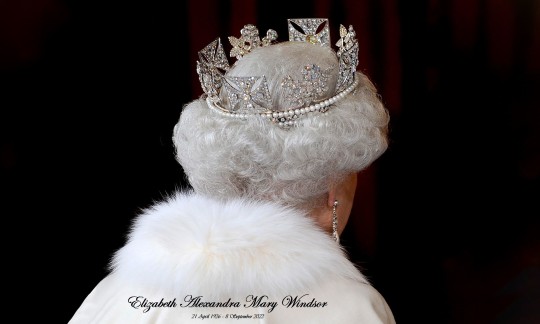
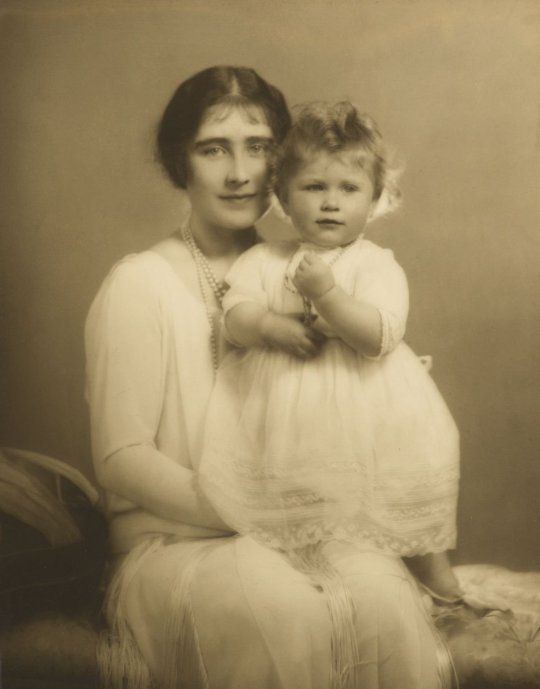
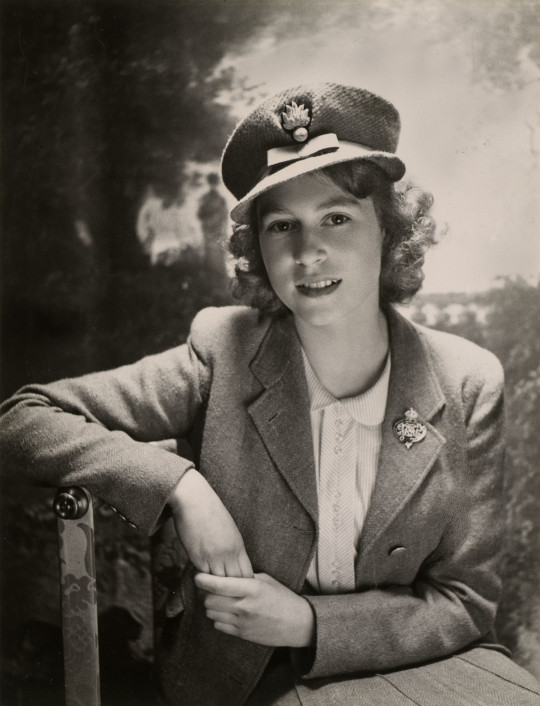
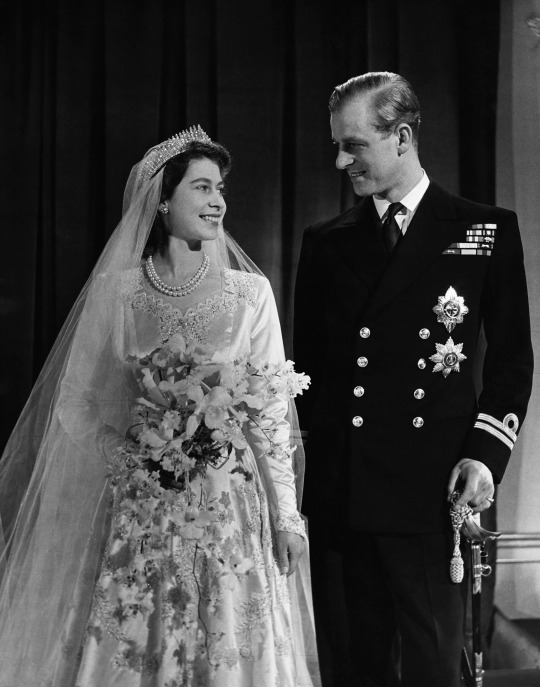

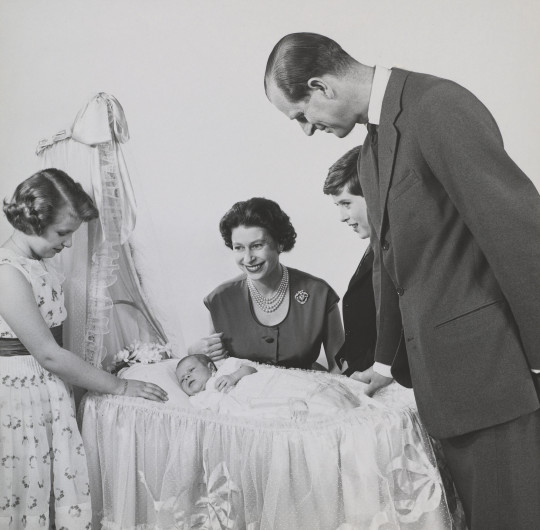
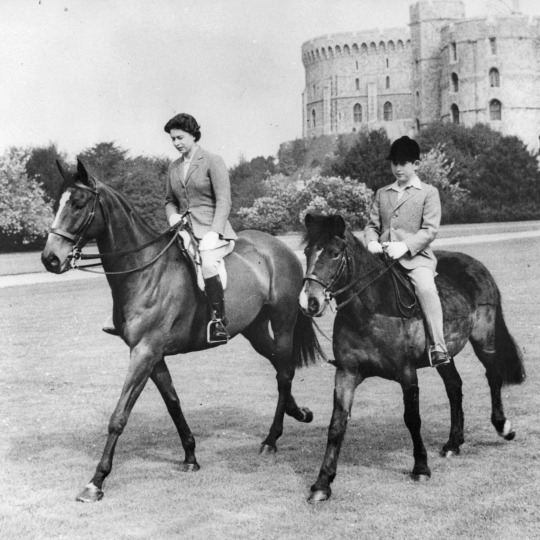
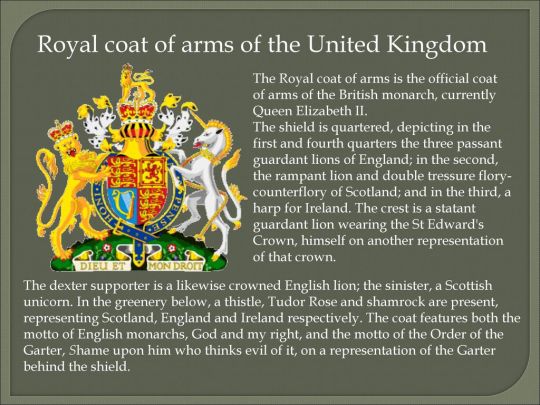
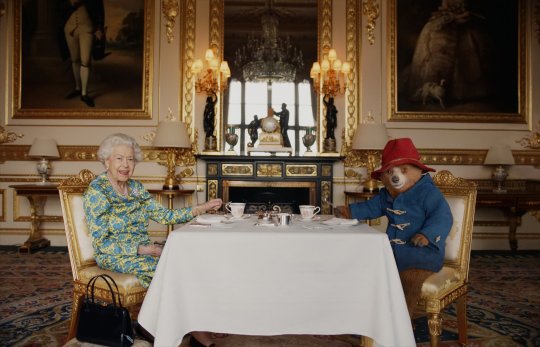
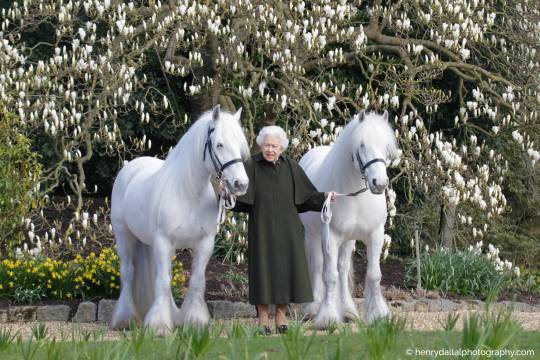
Queen Elizabeth II has died
Queen Elizabeth II, the United Kingdom’ s longest-serving monarch, has died at Balmoral aged 96, after reigning for 70 years.
Elizabeth II (Elizabeth Alexandra Mary; 21 April 1926 – 8 September 2022) was Queen of the United Kingdom and 14 other Commonwealth realms from 6 February 1952 until her death on 8 September 2022.
Her reign of 70 years and 214 days was the longest of any British monarch and the second longest recorded of any monarch of a sovereign country.
Elizabeth was born in Mayfair, London, as the first child of the Duke and Duchess of York (later King George VI and Queen Elizabeth). Her father acceded to the throne in 1936 upon the abdication of his brother, King Edward VIII, making Elizabeth the heir presumptive.
She was educated privately at home and began to undertake public duties during the Second World War, serving in the Auxiliary Territorial Service. In November 1947, she married Philip Mountbatten, a former prince of Greece and Denmark, and their marriage lasted 73 years until his death in April 2021. They had four children together: Charles III; Anne, Princess Royal; Prince Andrew, Duke of York; and Prince Edward, Earl of Wessex.
When her father died in February 1952, Elizabeth—then 25 years old—became queen regnant of seven independent Commonwealth countries: the United Kingdom, Canada, Australia, New Zealand, South Africa, Pakistan, and Ceylon (known today as Sri Lanka), as well as Head of the Commonwealth. Elizabeth reigned as a constitutional monarch through major political changes such as the Troubles in Northern Ireland, devolution in the United Kingdom, the decolonization of Africa, and the United Kingdom's accession to the European Communities and withdrawal from the European Union.
The number of her realms varied over time as territories have gained independence and some realms have become republics. Her many historic visits and meetings include state visits to China in 1986, Russia in 1994, the Republic of Ireland in 2011, and visits to or from five popes.
Significant events include Elizabeth's coronation in 1953 and the celebrations of her Silver, Golden, Diamond, and Platinum Jubilees in 1977, 2002, 2012, and 2022, respectively.
Elizabeth was the longest-lived and longest-reigning British monarch, the oldest and longest-serving incumbent head of state, and the second-longest verifiable reigning sovereign monarch in world history, only behind Louis XIV of France.
She faced occasional republican sentiment and media criticism of her family, particularly after the breakdowns of her children's marriages, her annus horribilis in 1992, and the death of her former daughter-in-law Diana, Princess of Wales, in 1997.
However, support for the monarchy in the United Kingdom remained consistently high, as did her personal popularity. Elizabeth died on 8 September 2022 at Balmoral Castle, Aberdeenshire.
“The Queen is dead, Long live King Charles III”
The Duchess of York with Princess Elizabeth, 30 June 1927 by Marcus Adams (The Royal Collection Trust),
Princess Elizabeth in uniform (1942) by Cecil Beaton (The Royal Collection Trust),
Princess Elizabeth and The Duke of Edinburgh on their wedding day, 20th November 1947 by Sterling Henry Nahum ‘Baron’ (The Royal Collection Trust),
Queen Elizabeth II poses on her Coronation Day on June 2, 1953, in London (Photography by Cecil Beaton),
Queen Elizabeth II with Prince Philip, Duke of Edinburgh and family - 16 Mar 1960 by Cecil Beaton (From the Collection of Queen Elizabeth The Queen Mother),
Queen Elizabeth II and her son, the Prince of Wales, out riding at Windsor Castle I May 18, 1961 (PA),
The Royal coat of arms of the United Kingdom used outside of Scotland,
Queen Elizabeth II Platinum Jubilee 2022 - Platinum Party At The Palace. The Queen Elizabeth II and Paddington Bear having cream tea at Buckingham Palace (BBC Platinum Party at the Palace),
Portrait of Queen Elizabeth II released by The Royal Windsor Horse Show on April 20, 2022 to mark the occasion of her 96th birthday.
#rip#queen elizabeth ii#elizabeth II#queen elizabeth#monarchy#united kingdom#royal#platinium junilee#windsor#markus adams#cecil beaton#theroyalcollectiontrust#paddington#bbc#balmoral#diana#king charles III#princess anne#prince andrew#prince edward#liveunique#history#britsh history#british royality
346 notes
·
View notes